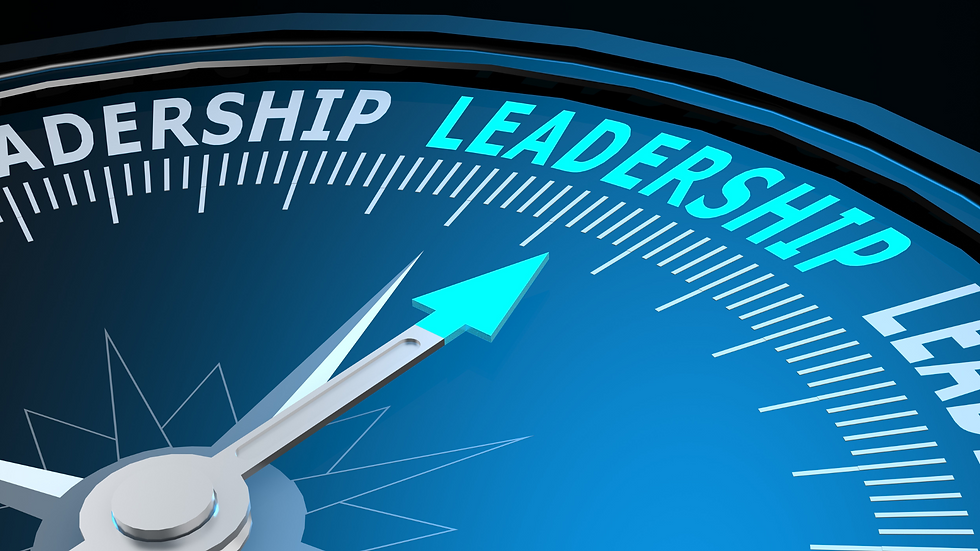Building Leadership Resilience: Essential Skills for Navigating Change
- AstutEdge Resource Center
- Feb 27
- 3 min read

Resilient leadership is the cornerstone of organizational success in an era defined by constant change. Leaders who adapt to shifting dynamics while inspiring their teams drive innovation, stability, and growth. Building leadership resilience isn’t just about surviving challenges—it’s about thriving in uncertainty and guiding organizations toward sustainable success.
This blog delves into essential skills and strategies for developing leadership resilience, exploring how they empower organizations to navigate change effectively.
Understanding Leadership Resilience
Leadership resilience is the ability to adapt, recover, and thrive in the face of adversity. It combines emotional intelligence, strategic thinking, and the capacity to inspire others under pressure. Resilient leaders don’t just respond to challenges; they use them as opportunities to grow and innovate.
Key Traits of Resilient Leaders:
Adaptability: Embracing change with flexibility and creativity.
Emotional Intelligence: Understanding and managing emotions to build trust and rapport.
Strategic Vision: Maintaining focus on long-term goals despite short-term setbacks.
Developing these traits helps leaders foster a culture of resilience within their teams and organizations.
Essential Skills for Leadership Resilience
1. Emotional Intelligence (EI)
Resilient leaders excel in emotional intelligence, which enables them to manage their own emotions while understanding and supporting others.
Strategies for Enhancing EI:
Practice active listening to understand team members’ perspectives.
Develop self-awareness through reflection and feedback.
Use empathy to build trust and strengthen relationships.
2. Decision-Making Under Pressure
Resilient leaders make sound decisions even in high-stakes situations. They assess risks, consider alternatives, and act decisively.
Tips for Effective Decision-Making:
Stay informed by gathering relevant data and insights.
Prioritize objectives to focus on what matters most.
Collaborate with diverse perspectives to enhance problem-solving.
3. Communication and Transparency
Clear communication is vital during times of change. Resilient leaders keep teams informed, aligned, and motivated by fostering open dialogue.
Best Practices for Communication:
Share updates regularly to reduce uncertainty.
Encourage questions and feedback to address concerns.
Use storytelling to convey vision and inspire action.
4. Building Collaborative Teams
Resilient leaders create cohesive teams that support each other and adapt collectively to challenges.
How to Foster Collaboration:
Encourage cross-functional teamwork to leverage diverse skills.
Set clear goals and expectations for alignment.
Celebrate team achievements to boost morale.
The Role of Leadership Resilience in Organizational Growth
Leadership resilience drives organizational growth by fostering a culture of adaptability and innovation. Here’s how resilient leaders contribute to long-term success:
Enhancing Employee Engagement: Resilient leaders inspire confidence and motivation, boosting team performance.
Driving Innovation: By embracing challenges, they encourage creative problem-solving.
Ensuring Stability: Resilient leadership provides a steady hand during uncertainty, maintaining focus on goals.
Organizations that prioritize leadership resilience are better equipped to navigate market disruptions, seize opportunities, and achieve sustained growth.
Strategies for Developing Leadership Resilience
1. Continuous Learning and Development
Investing in leadership training programs equips leaders with the skills to adapt to change and manage complexity.
Effective Training Approaches:
Workshops focused on resilience-building techniques.
Mentorship programs pairing leaders with experienced advisors.
Regular assessments to identify growth opportunities.
2. Encouraging a Growth Mindset
A growth mindset fosters resilience by framing challenges as opportunities to learn and improve.
How to Cultivate a Growth Mindset:
Encourage leaders to embrace feedback as a tool for development.
Recognize and reward effort, not just outcomes.
Promote a culture of curiosity and innovation.
3. Prioritizing Self-Care and Well-Being
Resilience starts with personal well-being. Leaders who prioritize their health and work-life balance are better equipped to support their teams.
Self-Care Strategies:
Set boundaries to avoid burnout.
Practice mindfulness and stress management techniques.
Allocate time for hobbies and activities that recharge energy.
Case Study: Leadership Resilience in Action
Scenario:
A mid-sized technology company faced a major market disruption due to rapid technological advancements and shifting customer demands. The CEO, recognized for their resilient leadership, guided the organization through the crisis.
Actions Taken:
Implemented a transparent communication strategy to align the team with the company’s vision.
Launched cross-functional training programs to upskill employees.
Encouraged innovation by empowering teams to propose solutions.
Results:
A 20% increase in employee engagement scores.
Successful launch of a new product line adapted to market needs.
Strengthened organizational culture and trust in leadership.
This case illustrates the tangible impact of leadership resilience on organizational success.
Conclusion
Leadership resilience is essential for navigating the complexities of today’s business environment. By cultivating emotional intelligence, decision-making skills, and a growth mindset, leaders can inspire their teams to thrive in the face of challenges.
Organizations that invest in developing resilient leaders position themselves for sustainable growth, innovation, and stability. Resilience isn’t just a leadership quality—it’s a strategic advantage in a world of constant change.
For guidance on building leadership resilience within your organization, contact us to learn more about our tailored development programs.
.png)


